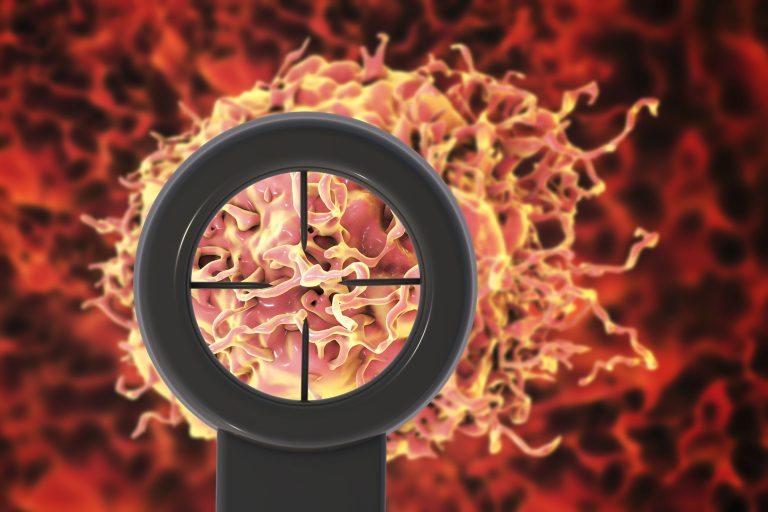
In a new study of triple-negative breast cancer, scientists from the Princess Margaret Cancer Centre in Toronto and led by senior scientists Cheryl Arrowsmith, Ph.D., and Mathieu Lupien, Ph.D., reported they have found a promising approach with a protein biomarker that may potentially identify patients for more precise targeted therapy.
Their findings, “GLUT1 inhibition blocks growth of RB1-positive triple-negative breast cancer,” were published recently in the journal Nature Communications.
Triple-negative breast cancer (TNBC) accounts for about 10–15% of all breast cancers. It differs from other types of invasive breast cancer in that it grows and spreads faster, has limited treatment options, and a worse prognosis. The “triple” in triple-negative breast cancer refers to the fact that the cancer cells lack three receptors, estrogen, progesterone, and the HER 2 protein which are targeted for treatment in other breast cancers.
“This disease has no precision medicine,” explained Lupien. “So patients are treated with chemotherapy because we don’t have a defined therapeutic target. Initially, it works for some patients, but close to a quarter of patients recur within five years from diagnosis, and many develop chemotherapy-resistant tumors.”
“Triple-negative breast cancer is a deadly form of breast cancer due to the development of resistance to chemotherapy affecting over 30% of patients. New therapeutics and companion biomarkers are urgently needed,” wrote the researchers. Recognizing the elevated expression of glucose transporter 1 (GLUT1, encoded by SLC2A1) and associated metabolic dependencies in TNBC, we investigated the vulnerability of TNBC cell lines and patient-derived samples to GLUT1 inhibition.”
The researchers were able to test the vulnerability of different patient-derived cell lines from triple-negative breast cancer to “chemical probes” (experimental, drug-like compounds) against inhibitors of the metabolic gatekeeper GLUT1. What they found was a link between cells with varying levels of RB1, a protein that acts as a tumor suppressor.
“Without this broad spectrum of samples, we might have missed the subset of triple-negative breast cancers that respond to our compound,” explained Lupien.
The compound targets GLUT1, part of the pathway transporting glucose into a cell to increase metabolic energy in the subset of cancer cells with high levels of RB1 protein which stops them from growing.
Blocking the pathway makes the cancer cells more responsive to the chemical compound, demonstrating this as a promising target for new anticancer therapy.
Arrowsmith believes that this work shows that differing levels of RB1 can be used as a biological biomarker to discriminate between treatment responders and non-responders in the future.
“What we’re trying to do is to understand in detail what subset of drugs is effective at targeting the minute molecular changes in the cancer cells,” commented Arrowsmith. “It’s like whack-a-mole when you try and treat cancer with one drug. As soon as you figure out how to stop a mechanism that drives the cell rogue, the cancer cells adapt and keep on growing. That’s the big challenge in treating cancer.
“The more we understand about the molecular complexity of cancer cells, the more we can target with precision. And the more we can build up a pharmacy of cancer drugs matched to specific changes in the cancer cell, the greater the chance of a cure,” Arrowsmith concluded.











